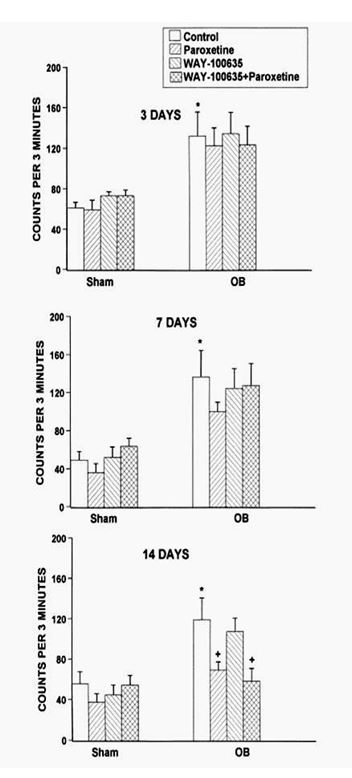This model mimics behavioral, physiological and neurochemical features of depression, such as deficits in learning and memory, reduced food motivated behavior and libido, and stress hyper-responsiveness. Bulbectomised animals show impairment of cognitive function. This animal model resembles the agitated depression phenomena found in humans. This model is applicable for both rats and mice.
Reproduced with permission from Elsevier
(http://www.sciencedirect.com/science/journal/00913057)
Cryan et al, 1999: Effects of 3, 7 and 14 days of treatment with WAY 100635 (5-HT1A receptor antagonist) and paroxetine (an SSRI drug) alone and in combination on olfactory bulbectomy induced hyperactivity in the open field. After 14 days, OB mice display characteristic open field hyperactivity, which is reversed by paroxetine or paroxetine plus WAY 100635. Data represent means with SE.
References
Mucignat-Caretta, C., Bondi, M. & Caretta, A. (2006) Time course of alterations after olfactory bulbectomy in mice. Physiol. Behav 89: 637–643.
Cryan JF, McGrath C, Leonard BE, Norman TR (1999) Onset of the effects of the 5-ht1a antagonist, way-100635, alone, and in combination with paroxetine, on olfactory bulbectomy and 8-oh-dpat-induced changes in the rat. Pharmacol Biochem Behav 63(2):333-338

